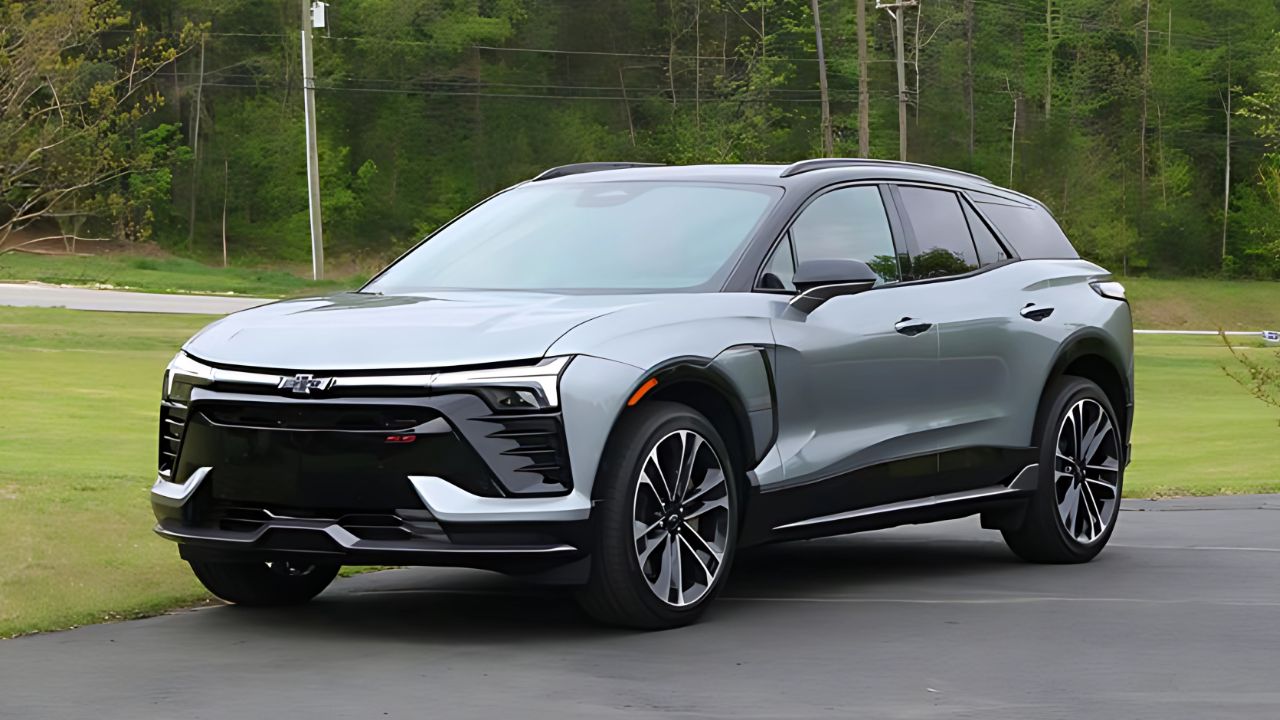If you’ve been following automotive news lately, you might have heard conflicting reports about the future of the Chevrolet Blazer. Some sources claimed the gas-powered version was getting the axe after 2025, while others suggested it would live on. Let’s clear up the confusion and explore what this means for you as a car buyer.
The Plot Twist: Gas-Powered Blazer Gets a Reprieve
Here’s the real scoop: A GM spokesperson told Car and Driver that the gas-powered Chevy Blazer will live on for the 2026 model year. This announcement came as a surprise to many, especially after earlier reports suggested the traditional gas engine would be retired.
The confusion started when industry insiders reported that General Motors planned to transform their Ramos Arizpe, Mexico facility into an all-electric vehicle production plant. Since that’s where the gas-powered Blazer is manufactured, it seemed logical that the internal combustion engine version would meet its end.
But GM had other plans. The automaker decided to keep both versions of the popular SUV in their lineup, giving consumers more choices rather than forcing them into the electric-only camp.
Why the Change of Heart Makes Sense
Market Demand Still Exists
While electric vehicle adoption is growing rapidly, many consumers aren’t ready to make the complete switch yet. After peaking at nearly 95,000 in 2020, sales of the current gas-powered Blazer have fallen off a cliff. Last year, GM sold just over 52,500 gas Blazers, but that’s still a significant number of customers who prefer traditional powertrains.
Some buyers face practical challenges with electric vehicles, including limited charging infrastructure in certain areas, apartment living situations without home charging options, or specific towing needs that gasoline engines currently handle better.
Giving Customers Options
Smart automakers understand that the transition to electric vehicles won’t happen overnight. By keeping both the gas and electric Blazer models available, Chevrolet allows customers to choose based on their specific needs, budget, and comfort level with new technology.
The Electric Success Story
While the gas-powered Blazer continues, the electric version has been gaining serious momentum. Meanwhile, GM sold more than 23,100 Blazer EV models in 2024, nearly 8,000 of which were sold in the final three months of the year.
Impressive Electric Performance
The 2025 Blazer EV isn’t just a compliance car – it’s a legitimate competitor in the electric SUV space. The rear-wheel-drive RS model offers up to 334 miles of EPA-estimated range, which is a strong showing among current EVs. That’s more than enough for most people’s daily driving needs and many road trips.
For those who crave performance, the high-end SS trim delivers serious power. The all-wheel-drive SS has enough oomph to reach 60 mph in less than 4.0 seconds according to Chevy, giving the Blazer EV the power to challenge rivals such as the Ford Mustang Mach-E GT and the Tesla Model Y Performance.
Competitive Pricing Strategy
Chevrolet has been aggressive with pricing to make the electric Blazer attractive to mainstream buyers. GM launched the 2025 Chevy Blazer EV last year with more range (up to 334 miles) and a lower starting price of just $45,995.
What This Means for You as a Buyer
More Choices, Better Deals
Having both gas and electric options available typically means better deals for consumers. Automakers often offer incentives to move inventory, and competition between powertrains can lead to attractive financing offers and rebates.
Test Drive Both Options
If you’re in the market for a midsize SUV, this situation gives you a unique opportunity to directly compare traditional and electric powertrains in the same vehicle platform. You can experience the instant torque and quiet operation of the electric version alongside the familiar feel and longer range capability of the gas model.
Consider Your Driving Patterns
Your daily routine should heavily influence your choice. If you primarily drive around town and have access to home or workplace charging, the electric Blazer could save you significant money on fuel costs. For frequent long-distance travelers or those who regularly tow heavy loads, the gas version might still make more sense.
Looking at the Bigger Picture
GM’s Electric Future Strategy
This decision reflects GM’s more measured approach to electrification. After selling over 114,400 electric vehicles last year, GM surpassed Ford to become the number two EV seller in the US behind Tesla. Rather than rushing to eliminate all gas engines, they’re maintaining options while building their electric infrastructure and customer confidence.
Industry Trend Implications
The Blazer situation mirrors what’s happening across the automotive industry. While manufacturers are investing heavily in electric technology, they’re also recognizing that consumer adoption varies by region, income level, and individual circumstances.
Production Timeline and Availability
For those interested in the gas-powered Blazer, The final order cycle for the ICE-powered Blazer is scheduled for the week of October 17th, 2025. However, with the confirmation of a 2026 model year, this timeline may change.
Electric Blazer production continues to ramp up at the same Mexico facility, alongside other GM electric vehicles like the Equinox EV and Cadillac Optiq.
Making Your Decision
Whether you choose gas or electric, the Blazer offers solid value in the competitive midsize SUV market. The gas version provides familiar technology and widespread refueling infrastructure, while the electric model delivers cutting-edge features, lower operating costs, and impressive performance.
Consider factors like your budget, driving habits, home situation, and environmental priorities when making your choice. Both options have their merits, and having the choice between them is ultimately a win for consumers.
The automotive landscape is evolving rapidly, but GM’s decision to keep both powertrains available shows that sometimes the best strategy is giving customers exactly what they want: options.
